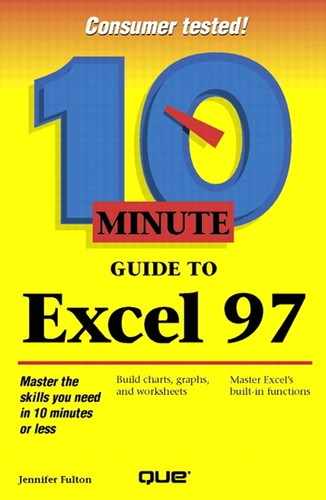Customizing the Toolbars
If Excel's toolbars provide too few (or too many) options for you, you can create your own toolbars or customize existing toolbars. To customize a toolbar, follow these steps:
If the toolbar you want to customize is not currently visible, click the Toolbars tab and select it from the list. The toolbar appears.
To change the size of the toolbar icons, to turn on or off ScreenTips, or to change the animation of your menus, click the Options tab. On the Options tab, select the options you want to apply. For example, to make the toolbar icons larger, click the Large icons option.
To add or remove buttons from a toolbar, click the Commands tab.
To add a button to a toolbar, select its category. (For example, to add the Clear Contents button to a toolbar, select the Edit category.) You can add menus to a toolbar as well; you'll find them listed at the bottom of the Categories list. Once you've selected the proper category, click the command you want and drag it onto the toolbar, as shown in Figure 3.3.
Figure 3.3. To add a button to a toolbar, drag it there.

Don't Know What an Option Is For?
Simply select the command and then click Description to learn what that command does.
To remove a button from a toolbar, drag it off the toolbar.
To rearrange the buttons on a toolbar, drag them around within the bar.
Click the Close button when you're done.
If you mess up a toolbar, you can return to its default settings (the way it was before you or someone else changed it). From within the Customize dialog box, click Toolbars, highlight the name of the toolbar you want to reset, and then click the Reset button.
